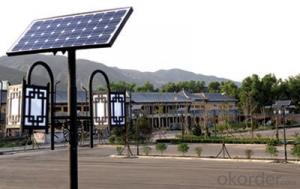Solar energy is a dream for many homeowners and businesses alike. It’s clean, renewable, and can significantly reduce energy bills. But, there’s one big obstacle that often stands in the way of realizing that dream: the cost of solar panels. In this article, we’ll explore the various aspects of solar panel affordability, from initial costs to long-term savings, and offer some practical tips on how to make solar energy a reality for you.
The Upfront Investment
The first thing that comes to mind when discussing the cost of solar panels is the upfront investment. Solar panels can be expensive, with the average cost ranging from $15,000 to $25,000 before tax credits and rebates. This can be a daunting figure for many, but it’s important to remember that this is a sunk cost – once you’ve made the investment, you’re on your way to reaping the benefits.
Financing Options
If the initial cost seems too steep, there are financing options available that can make solar panels more affordable. Solar loans, leases, and power purchase agreements (PPAs) are popular ways to spread the cost of solar panels over time. Solar loans can have competitive interest rates, and some even come with federal tax credits. Leasing and PPAs allow you to install solar panels with little to no upfront cost, but you’ll be paying for the electricity they produce over a set period of time.
Tax Credits and Incentives
One of the best ways to offset the cost of solar panels is through tax credits and incentives. The federal government offers a tax credit for solar energy systems, which can reduce your tax liability by up to 26% of the system’s cost. Additionally, many states and local governments offer their own incentives, which can further reduce the overall cost. It’s worth checking with your local utility company or a solar installation company to find out what incentives are available in your area.
Energy Savings Over Time
The long-term savings from solar panels are hard to ignore. Once the initial investment is paid off, you’ll start seeing a reduction in your energy bills. The exact amount you save will depend on your energy usage, the size of your solar system, and the cost of electricity in your area. But, on average, homeowners can save thousands of dollars each year on their energy bills.
Maintenance and Repair Costs
While solar panels require very little maintenance, there are still some costs associated with keeping them in good working order. Regular cleaning and the occasional repair or replacement of parts can add up over time. However, these costs are generally minimal compared to the savings you’ll experience from reduced energy bills.
The Environmental Impact
Beyond the financial benefits, there’s also the environmental impact to consider. Solar energy is a clean, renewable source of power that can help reduce your carbon footprint and contribute to a healthier planet. This is an aspect of solar panel affordability that can’t be quantified in dollars and cents, but it’s an important factor for many people.
Making the Decision
Deciding to invest in solar panels is a big decision, but it doesn’t have to be a daunting one. By considering the upfront costs, exploring financing options, taking advantage of tax credits and incentives, and looking at the long-term savings, you can make an informed decision about whether solar energy is right for you. Remember, the cost of solar panels is just one part of the equation – the benefits of clean, renewable energy and the potential for significant energy savings make solar panels an attractive investment for many.
Wrapping Up
Solar panels may seem like a luxury, but they’re becoming more and more accessible as technology advances and costs decrease. As you weigh the costs and benefits, keep in mind that solar energy is not just a smart financial choice, but also a responsible environmental one. Whether you’re looking to save money, reduce your environmental impact, or both, solar panels might just be the solution you’ve been searching for.

